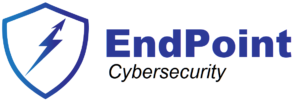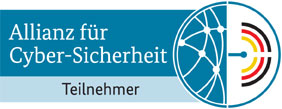Implementing ISO 27001:2022 Annex A.18 – Compliance
We started the ISO 27001:2022 series with the promise of explaining how the 14 categories of controls can be implemented.
Today we end the series with ISO 27001:2022 Annex A.18, “Compliance”, which addresses the importance of ensuring that organizations comply with relevant laws, regulations, contractual agreements, and other requirements related to information security. This annex focuses on ensuring that the organization identifies and adheres to all applicable legal, statutory, regulatory, and contractual requirements regarding information security and the requirements of the ISMS itself.
Understanding the Importance of Compliance
Annex A.18 is divided into several controls designed to help organizations manage and demonstrate compliance with various information security requirements.
These controls aim to prevent breaches of legal, statutory, regulatory, or contractual obligations related to information security and the security requirements of the organization.
Compliance with legal, regulatory, and contractual requirements is essential for organizations to maintain the confidentiality, integrity, and availability of information assets and mitigate legal and regulatory risks.
Annex A.18 emphasizes several key aspects:
- Legal and Regulatory Requirements: Identifying and understanding applicable laws, regulations, and industry standards related to information security.
- Contractual Obligations: Ensuring compliance with contractual agreements, service level agreements (SLAs), and data protection agreements with customers, partners, and suppliers.
- Risk Management: Assessing and mitigating legal and regulatory risks associated with non-compliance, including financial penalties, legal liabilities, and damage to reputation.
Key Controls in Annex A.18:
- A.18.1.1 Identification of Applicable Legislation and Contractual Requirements: Identify all relevant requirements that the organization must comply with.
- A.18.1.2 Intellectual Property Rights (IPR): Ensure protection of IPR, covering software, information content, and patents.
- A.18.1.3 Protection of Records: Securely manage records in accordance with legal, regulatory, and contractual requirements.
- A.18.1.4 Privacy and Protection of Personally Identifiable Information: Ensure the protection of personal information as per privacy laws and other requirements.
- A.18.1.5 Regulation of Cryptographic Controls: Use cryptographic controls as required by legislation, regulations, and agreements.
Practical Implementation of Annex A.18
Legal and Regulatory Compliance Assessment
Practical Examples
- Regulatory Mapping: Identify and map relevant legal and regulatory requirements, such as data protection laws (e.g., GDPR, CCPA), industry standards (e.g., PCI DSS, HIPAA), and sector-specific regulations (e.g., SOX for financial services).
- Compliance Assessment: Conduct compliance assessments to evaluate the organization’s adherence to legal and regulatory requirements, including data protection principles, security controls, and breach notification obligations.
Contractual Compliance Management
Practical Examples
- Contract Review: Review contractual agreements, SLAs, and data processing agreements to identify information security requirements, confidentiality obligations, data protection clauses, and compliance obligations.
- Compliance Monitoring: Monitor compliance with contractual agreements by tracking performance metrics, service levels, and adherence to contractual terms and conditions.
Risk Management and Compliance Monitoring
Practical Examples
- Risk Assessment: Assess legal and regulatory risks associated with non-compliance, including financial penalties, legal liabilities, and reputational damage, and implement measures to mitigate these risks.
- Compliance Monitoring: Establish processes for ongoing compliance monitoring, including periodic reviews, audits, and assessments to ensure adherence to legal, regulatory, and contractual requirements.
We know Compliance is hard, so here are some more examples:
More examples
- Compliance Framework Development
- Example: A multinational corporation needs to comply with the GDPR for its operations in Europe and the CCPA for those in California.
- Implementation: Establish a compliance framework that identifies all applicable legal and regulatory requirements for each region of operation. Maintain a database of these requirements and update it as laws evolve.
- Training and Awareness
- Example: An organization handling sensitive patient data under HIPAA must ensure that all employees are aware of the requirements.
- Implementation: Develop ongoing training programs and workshops to educate employees about their responsibilities under relevant laws and how these impact their day-to-day operations.
- Auditing and Monitoring
- Example: A financial services firm regularly audits its data handling practices to ensure compliance with the Sarbanes-Oxley Act.
- Implementation: Implement a schedule for regular audits, both internal and external, to assess compliance with legal and contractual obligations. Use automated tools to monitor compliance continuously.
- Handling Intellectual Property
- Example: A software development company uses proprietary code that needs to be protected under copyright laws.
- Implementation: Implement IPR controls, including secure storage, access controls, and regular audits of IPR usage and adherence to licensing agreements.
- Privacy Management
- Example: A retail company collects customer data and needs to comply with privacy laws in multiple jurisdictions.
- Implementation: Deploy a privacy management solution that helps in classifying, managing, and protecting personal data in compliance with all applicable privacy laws.
Auditing Annex A.18 Implementation
The audit process for ISO 27001:2022’s Annex A.18 involves verifying that the organization has effectively implemented the controls to meet compliance requirements. The audit typically includes:
- Document Review: Review policies, procedures, compliance records, training records, audit reports, and any actions taken on previous audit findings.
- Interviews: Discuss with management and staff to assess their understanding and implementation of compliance controls.
- Observation: Observe processes and controls in operation to verify that they function as intended.
- Compliance Verification: Check compliance with specific legal, regulatory, and contractual requirements through evidence collection and analysis.
- Report Findings: Provide a detailed report of the audit findings with recommendations for improvement if any non-conformities are found.
Conclusion
Effective implementation of ISO 27001:2022 Annex A.18 ensures that an organization not only meets its legal and contractual obligations but also demonstrates a commitment to comprehensive information security management.
By establishing a structured compliance program and conducting thorough audits, organizations can maintain high standards of information security and build trust with stakeholders.
The post Implementing ISO 27001:2022 Annex A.18 – Compliance first appeared on Sorin Mustaca on Cybersecurity.



